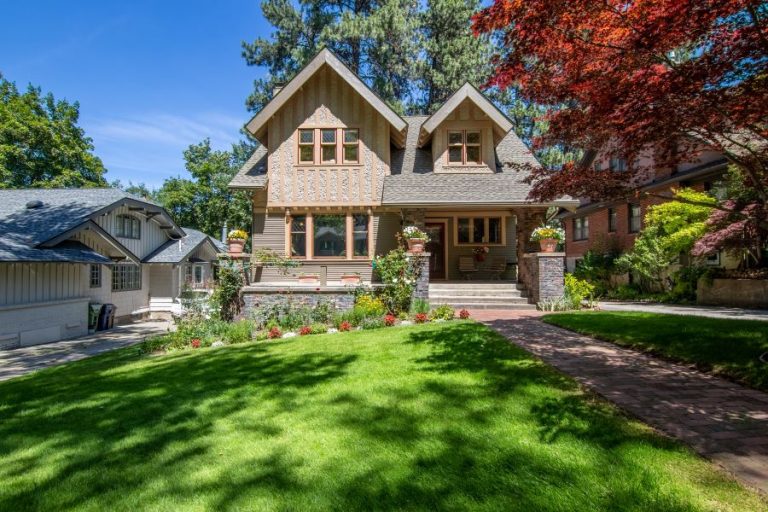
Flipping Houses for profit: Pros and Cons Explained
Welcome to exciting adventure of House Flipping. TV shows, news outlets and Youtuber’s might already provided you with a glimpse of many challenges that arise and how problems are solved. In this article, we provide picture of the house flipping, exploring not only its enticing advantages but also the daunting challenges it presents.
House flipping is purchasing a property with the intention ofs transforming it into a desirable home and then selling it for a profit. Picture this: you acquire a worn-down, neglected house, and through careful planning and skilled renovations, you turn it into nice, habitable home for families. At payback time you you sell this property for a significantly higher price than what you invested. That, in essence, is house flipping.
Table of Contents
- Introduction
- What is House Flipping?
- The Thrill of Flipping
- The Pros of House Flipping
- Quick Profit Potential
- Enhancing Communities
- Creative Outlet
- The Cons of House Flipping
- Financial Risk
- Time and Effort
- Market Fluctuations
- Is Flipping Right for You?
- Assessing Your Financial Situation
- Skillset and Knowledge
- Getting Started in House Flipping
- Research and Education
- Team Building
- Navigating the Real Estate Market
- Finding the Right Property
- Understanding Market Trends
- Financing Your Flip
- Traditional Loans
- Alternative Financing Options
- Renovation and Design
- Creating a Vision
- Budgeting for Renovations
- Legal and Permit Considerations
- Navigating Regulations
- Permit Procurement
- The Flipping Process
- Renovation Stage
- Marketing and Selling
- Potential Pitfalls to Avoid
- Overpricing
- Underestimating Costs
- Success Stories
- Frequently Asked Questions
- What is the average profit margin in house flipping?
- How long does it take to flip a house?
- What are the tax implications of house flipping?
- Is house flipping a sustainable career?
- Can you flip a house with no prior experience?
- What are the best markets for house flipping?
- Conclusion
The Thrill of Flipping
What sets house flipping apart from other forms of real estate investment is the palpable thrill that comes with it. It’s not just a business; it’s an adrenaline-pumping experience that keeps you moving into next project.
Seasoned flippers can take property that has been left to decay and transforming it into a dream home for someone else. It’s all about seeing potential where others see problems and turning that vision into reality. As you walk through the dusty, neglected rooms, you start to imagine how you can breathe life back into this forgotten space. Every step of the renovation process becomes a part of your creative vision.
The Pros of House Flipping
Quick Profit Potential
House flipping offers the tantalizing potential for quick profits. Imagine this: you find a property at a bargain price, invest in strategic renovations, and then sell it for a significantly higher value. Unlike long-term real estate investments where you wait patiently for property values to rise, flipping allows you to reap rewards within months.
Enhancing Communities
House flippers are often unsung heroes in their communities. By taking neglected properties and turning them into attractive homes, they breathe new life into neighborhoods. Think about it; a run-down house gets a makeover, increasing its curb appeal and value. This, in turn, can have a ripple effect on the entire community.
When you flip a house, you’re not just making a profit; you’re contributing to the improvement of the area. Enhanced properties can lead to higher property values for your neighbors, fostering a sense of pride.
Creative Outlet
Flipping houses isn’t just about numbers; it’s a creative outlet that allows you to showcase your flair for design and imagination. Imagine walking into a outdated property and envisioning the transformation it could undergo. From selecting the paint colors to designing the layout that maximizes space and functionality, you get to wear the hat of both planner and a problem solver.
Creativity is the driving force behind every successful flip. It’s about infusing your unique style into the property, making it stand out in a crowded market.
The Cons of House Flipping
Financial Risk
As exhilarating as house flipping can be, it’s essential to acknowledge the elephant in the room – financial risk. House flipping requires a substantial initial investment, and there’s always the chance that things may not go as planned.
Picture this scenario: you buy a property, invest heavily in renovations, and anticipate a sizable profit. But what if the market takes an unexpected dip? Suddenly, the property you thought would sell like hotcakes becomes a challenge to offload. Your investment may get tied up for longer than anticipated, putting a dent in your finances.
Time and Effort
Flipping houses demands more than just a financial investment; it demands your time and effort. Think of it as a full-time job that requires your hands-on attention. Renovations can be time-consuming, and if you’re not actively involved in managing the project, delays and miscommunication can lead to increased costs.
In the world of flipping, time is money. The longer a property sits on the market, the more it costs you in terms of holding expenses, loan interest, and missed opportunities. It’s not a passive investment where you can sit back and watch your money grow; you have to be in the driver’s seat.
Market Fluctuations
Real estate markets are notorious for their fluctuations. What’s considered a hot property today might be lukewarm tomorrow. House flippers must constantly adapt to these market trends, which can be challenging.
Imagine you bought a property in a thriving neighborhood, expecting it to appreciate quickly. However, if the neighborhood experiences a sudden downturn due to unforeseen circumstances, your profit margin could shrink considerably. Market unpredictability adds an element of uncertainty that every house flipper must contend with.
In essence, while the potential rewards of house flipping are undeniably attractive, the risks are equally significant. The financial roller coaster can be thrilling, but it’s not for the faint of heart. Balancing the potential for quick profits with the inherent challenges and uncertainties is the tightrope that every house flipper walks.
Is Flipping Right for You?
Now that we’ve explored the pros and cons, it’s essential to determine if house flipping is the right fit for you.
Assessing Your Financial Situation
Consider your financial stability. Do you have the funds to invest in a property and carry out renovations. It’s crucial to have a clear picture of your financial situation before diving in. Do you have enough money set aside to cover unexpected expenses in case of issues with renovation or longer wait to find buyer for your home?
Skillset and Knowledge
House flipping isn’t for novices. Do you possess the necessary skills and knowledge? To maximize your profit can you do major portion of project all by yourself? From construction know-how to market analysis, having a solid foundation is vital.
Getting Started in House Flipping
If you’ve decided that house flipping aligns with your goals and abilities, here’s how to get started.
Research and Education
Education is your best bet. Study the real estate market, learn about renovation techniques, and stay updated on industry trends. The more you know, the better equipped you’ll be.
Team Building
No one can flip a house alone. Start by building a reliable team that includes contractors, real estate agents, and financial experts. Their expertise will be invaluable and absolutely necessary.
Navigating the Real Estate Market
Finding the Right Property
Location is key in real estate. Research different neighborhoods and look for properties with potential for value appreciation. A good deal starts with the right property.
Understanding Market Trends
Stay informed about market trends and cycles. Knowing when to buy and sell can make a significant difference in your profit margin.

Financing Your Flip
Traditional Loans
Traditional mortgages or loans from banks are common ways to finance a flip. However, they come with stringent requirements and lengthy approval processes.
Alternative Financing Options
Explore alternative financing options, such as hard money loans or partnerships with investors. These options may provide more flexibility.
Renovation and Design
Creating a Vision
Before swinging a hammer, create a clear vision for your property. What’s your design aesthetic, and how can you make the space more appealing to buyers?
Budgeting for Renovations
Budgeting is critical. Overspending on renovations can eat into your profits, so plan your budget meticulously.
Legal and Permit Considerations
Navigating Regulations
Understanding local regulations and permits is crucial. Failing to comply can lead to costly delays and fines.
Permit Procurement
Ensure you have all the necessary permits before starting renovations. This will help you avoid legal troubles down the road.
The Flipping Process
Renovation Stage
During the renovation stage, monitor progress closely. Quality workmanship is essential to attract buyers.
Marketing and Selling
Once the property is ready, it’s time to market and sell. Utilize online listings and real estate agents to reach potential buyers. Be prepared to adjust price in case of changing market conditions.
Potential Pitfalls to Avoid
Overpricing
Pricing your flip too high can deter buyers. Research comparable properties in the area to determine the right price point.
Underestimating Costs
Budget overruns can be disastrous. Always have a contingency fund for unexpected expenses.
Success Stories
To provide a well-rounded perspective on the real estate license debate, let’s explore two success stories—one from a licensed house flipper and one from a non-licensed flipper.
The Licensed Flipper
John, a licensed real estate agent turned house flipper, attributes much of his success to his license. His access to the MLS allowed him to identify undervalued properties quickly. He also used his negotiation skills to secure favorable purchase prices. John’s legal knowledge ensured smooth transactions, and his ethical standards earned him a reputation for trustworthiness.
In simpler terms: John’s real estate license helped him find great deals, negotiate effectively, and build trust with clients.
The License-Free Flipper
Sarah, on the other hand, decided not to pursue a real estate license. Instead, she partnered with her brother, who was a licensed real estate agent. Together, they formed a successful house flipping team. Sarah handled the renovations and design, while her brother managed the legal and transactional aspects. This collaboration allowed them to thrive without Sarah obtaining her own license.
In simpler terms: Sarah teamed up with her brother, who had a license, and together they flipped houses successfully.
Frequently Asked Questions
What is the average profit margin in house flipping?
The average profit margin in house flipping can vary widely. On average, flippers aim for a profit margin of 10% to 20% after all expenses.
How long does it take to flip a house?
The time it takes to flip a house depends on the extent of renovations and market conditions. On average, it can range from a few months to a year.
What are the tax implications of house flipping?
The tax implications of house flipping can be complex. Profits are typically subject to capital gains tax, and it is best to a tax professional lined up to answer any questions and plan long term.
Is house flipping a sustainable career?
House flipping can be a lucrative career if done right. However, it’s not without risks. It’s crucial to build expertise and it is essential to have a financial cushion.
Can you flip a house with no prior experience?
While it’s possible to flip a house with no prior experience, it’s highly recommended to gain knowledge and skills in real estate and renovations first.
What are the best markets for house flipping?
The best markets for house flipping can change over time. Research emerging markets and areas with high demand for housing.
Here are some of the best markets for house flipping based on recent trends:
1. Phoenix, Arizona
Phoenix consistently ranks among the top markets for house flipping. The city boasts a robust job market, a growing population, and a favorable cost of living. The affordability of properties, coupled with strong demand, makes it an attractive destination for house flippers.
2. Tampa, Florida
Tampa offers a combination of affordability and demand that appeals to house flippers. The city’s warm climate, job opportunities, and a thriving tourism industry contribute to its appeal. Florida’s lack of state income tax is an additional financial incentive.
3. Las Vegas, Nevada
Las Vegas, known for its entertainment and hospitality industry, has rebounded from the housing crash and offers a wealth of flipping opportunities. The market has seen steady growth in both population and property values.
4. Atlanta, Georgia
Atlanta’s diverse economy, including a booming film industry, attracts residents and investors alike. The city offers a range of affordable properties suitable for house flipping.
5. Raleigh, North Carolina
Raleigh benefits from a strong job market, thanks to its thriving tech industry and research institutions. The city’s affordability and population growth make it an appealing choice for house flippers.
6. Charlotte, North Carolina
Charlotte, like Raleigh, enjoys economic growth and a stable housing market. Its low cost of living and increasing demand for housing contribute to its status as a prime market for house flipping.
7. Nashville, Tennessee
Nashville’s vibrant music scene and diverse economy attract newcomers, creating a demand for housing. The city’s property values have been steadily increasing, providing potential for profit in the flipping business.
8. Boise, Idaho
Boise’s affordability, scenic surroundings, and a burgeoning tech sector make it a hotspot for both residents and investors. The city’s strong demand for housing has led to a competitive real estate market.
9. Austin, Texas
Austin’s rapid population growth, thriving job market, and cultural attractions have made it a popular destination. House flippers can find opportunities in the city’s diverse neighborhoods.
10. Denver, Colorado
Denver offers a mix of urban and outdoor appeal, drawing in residents and investors. While property values have been rising, the city’s strong job market and quality of life continue to drive demand.
Conclusion
House flipping is not merely a real estate investment; it’s a thrilling pursuit that combines financial acumen with creative vision. House flippers journey is not without its hurdles. You’ve explored the financial risks, the demanding time and effort required, and the ever-fluctuating nature of real estate markets. House flipping, as you’ve learned, is a high-stakes game that demands careful planning, skill, and resilience.
In closing, the world of house flipping is both a challenge and an opportunity. It’s a realm where creativity meets financial strategy, where risk and reward dance on a tightrope. With the right mindset, knowledge, and preparation, you can make your mark in this captivating industry.








